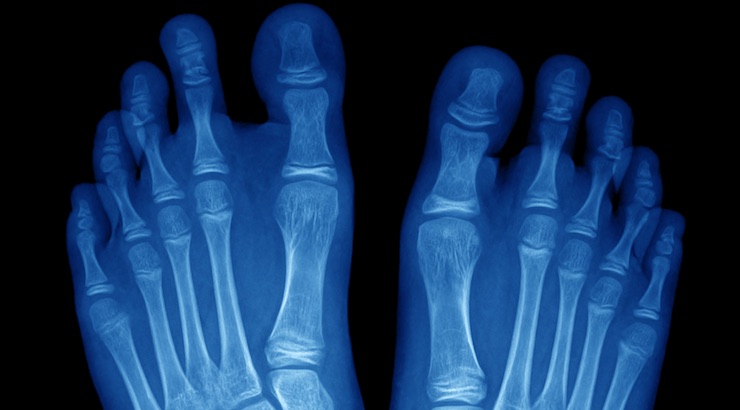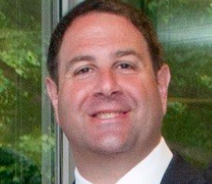How to Peak Your Soccer Performance and Minimize The Risk of Injury
In soccer, a players feet are practically everything. Taking care of an athletes feet is critical to sustained success and high level performance. But how many players (of any age) really take care of their feet? Here is great advice from John Gallucci Jr.
What happens if a soccer player’s foot gets stepped on in practice or while playing a game?
John Gallucci Jr. — the Medical Coordinator for more than 600 pro soccer players at the MLS, and the former Head Trainer of the New York Red Bulls on why it is so important to take care of your feet if you play soccer … after all, what do you play soccer with? Yep, your feet.
Gallucci Jr. is the former Head Trainer of the New York Red Bulls MLS team and a Sports Medicine consultant for professional athletes in the NHL, NFL, NBA, MLB, and USA Wrestling. Gallucci, Jr. is also President of JAG Physical Therapy & JAG Pediatric Therapy.
SoccerToday Reader Question: What happens if a soccer player’s foot gets stepped on in practice or while playing a game?
John Gallucci Jr.: Anytime a bone is involved in a crushing mechanism there is potential for a bone bruise or a fracture. Although the bones in the foot – 26 to be exact – can be very strong and can withstand a great amount of force, injury risk is increased due to the force being applied over a smaller surface area of the cleat or spike.
If pain is felt for an extended period of time and/or walking becomes difficult an x-ray or bone scan would be advised to rule out fractures.
Due to soccer players relying on their feet so heavily it is important that they take good care of them. Athletes should remember to wear properly fitting cleats to avoid blisters and ingrown toe nails.
Proper hygiene, such as wearing clean, dry socks and airing one’s cleats out following a game or practice, is required to avoid athlete’s foot. In regards to pedicures, athletes in season should be careful because following a pedicure the skin on the foot is softer which can lead to blisters.
Also, in grown toenails can develop from a nail being cut improperly which can lead to an infection and pain especially in the small toe boxes of the soccer cleat.

For any questions in regards to the feet seek advice from a podiatrist. Professional soccer players have team podiatrists who are in charge of coordinating and managing all care of the foot.
John Gallucci Jr.’s Recovery Tips For Soccer Players
SoccerToday: What advice can you share with our passionate soccer players and readers?
John Gallucci Jr.: Although we like to live in an “instant gratification” society, the human body doesn’t play by the same rules.
Every human is unique and every injury is unique as well!
Injury recovery times are typically given out by health care professionals to their patient or athlete following injury, but these timelines should be used as guidelines only.
The best way to know if you are ready to return to your sport following injury is to listen to your body and consult with your sports medicine team to include your physician, athletic trainer, physical therapist, etc.
Return to play following an injury should be a gradual process and as mentioned in my book “Soccer Injury Prevention and Treatment” should include the Eight Goals of Rehabilitation.
For Soccer Players, the Eight Goals of Rehabilitation are:
- Control Pain and Inflammation
- Restore Range of Motion
- Restore Flexibility
- Restore Muscular Strength and Endurance
- Restore Balance and Proprioception
- Restore Cardiovascular Endurance
- Return to Functional Training
- Return to Sport-Specific Training
Some coaches still think — and parents too — that players should push through an injury, push through the pain. This is usually wrong.
Playing through an injury can delay recover. And it does not show how tough a player is nor how committed they are to the game of soccer.
Some coaches think — and parents too believe this is what the pros do. Is this really what the pros do? When is this a sign of dedication, and when is it a sign of stupidity and selfishness on the side of an adult? When winning means ignoring an injury?
It is common practice that parents look to the professional athletes for guidelines on injury return to play timelines and post injury care.
What most fail to remember is that the professional athletes have a team of medical professionals working with them each and every day which gives the professional athlete the optimal opportunity to heal, recover, regain their strength and return to the field.
Our youth athletes, although they are equally as important, do not have the same access to a team of medical professionals working with them each and every day ….

My best advice here is to listen to the athlete when they report an injury and seek medical advice from an athletic trainer, physical therapist or physician to determine the extent of the injury and to get advice on return to play timelines.
RELATED ARTICLES: JOHN GALLUCCI JR.





